Why you can trust Tom's Hardware
Given the relatively minor difference in gaming performance, we're not expecting much from our Powenetics testing, but let's check the results. We have the equipment to record in-line GPU power consumption and other aspects of the cards. We collect data while running Metro Exodus at 1080p/1440p ultra (whichever uses more power) and run the FurMark stress test at 1600x900. Our test PC remains the same old Core i9-9900K as we've used previously to keep results consistent.
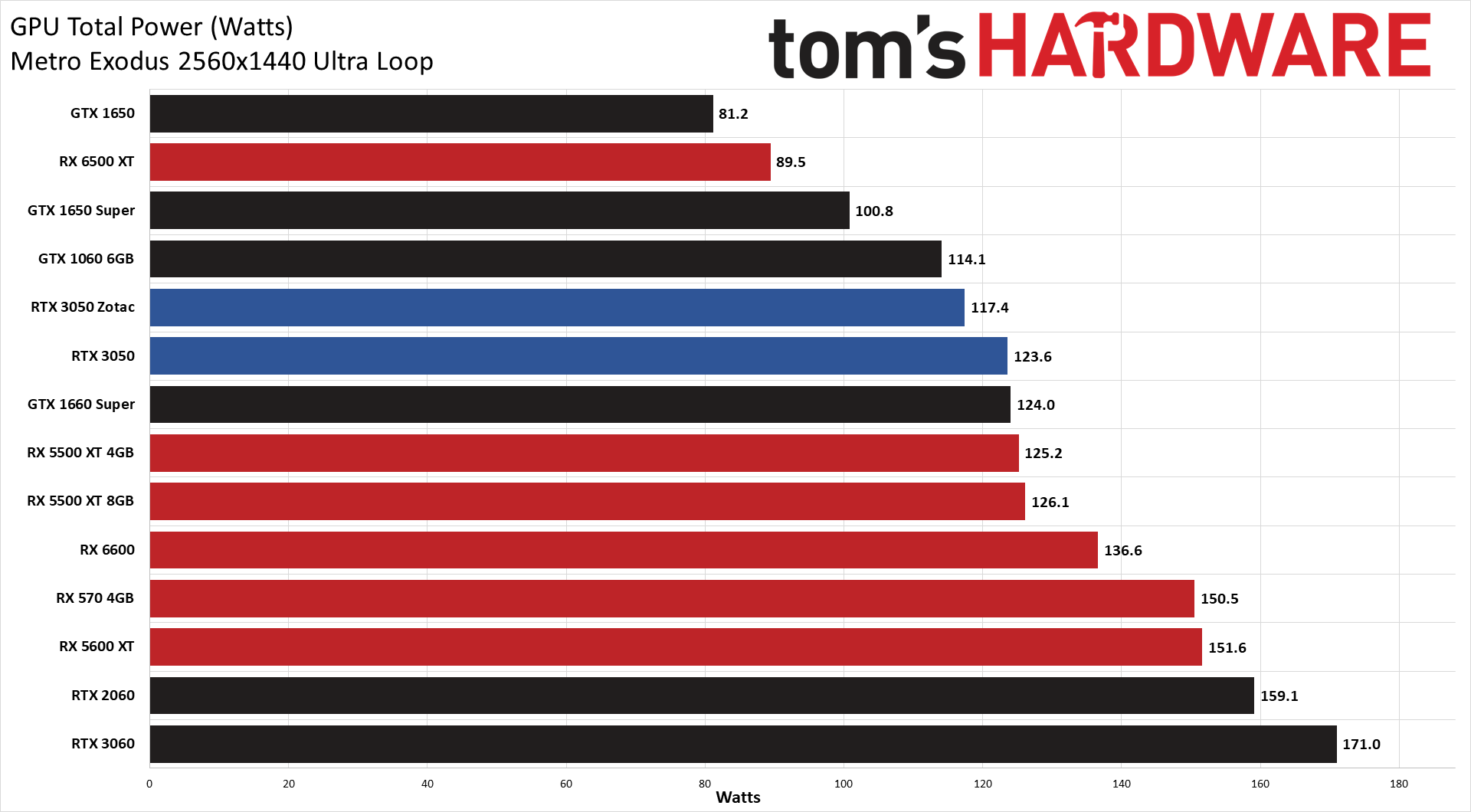
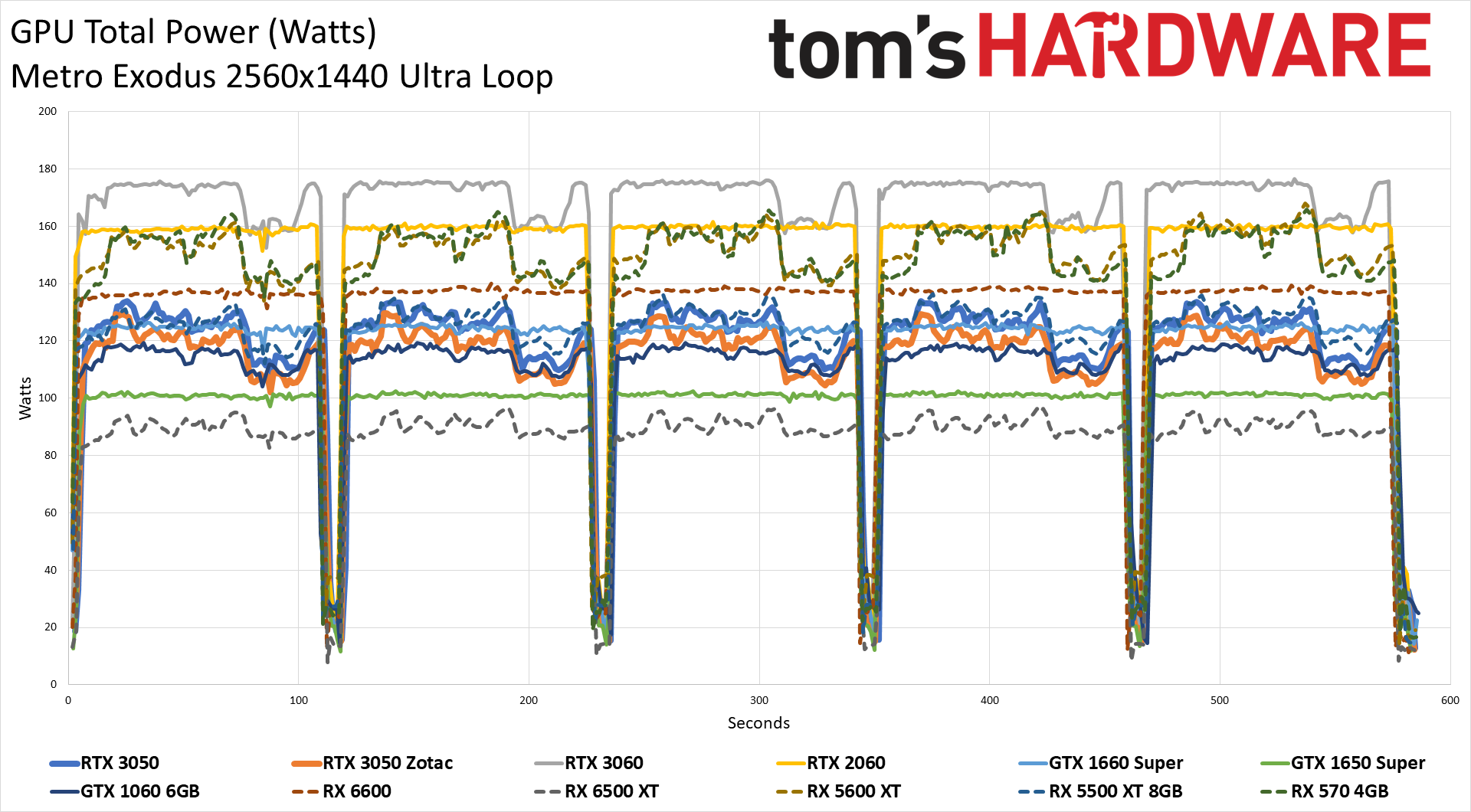
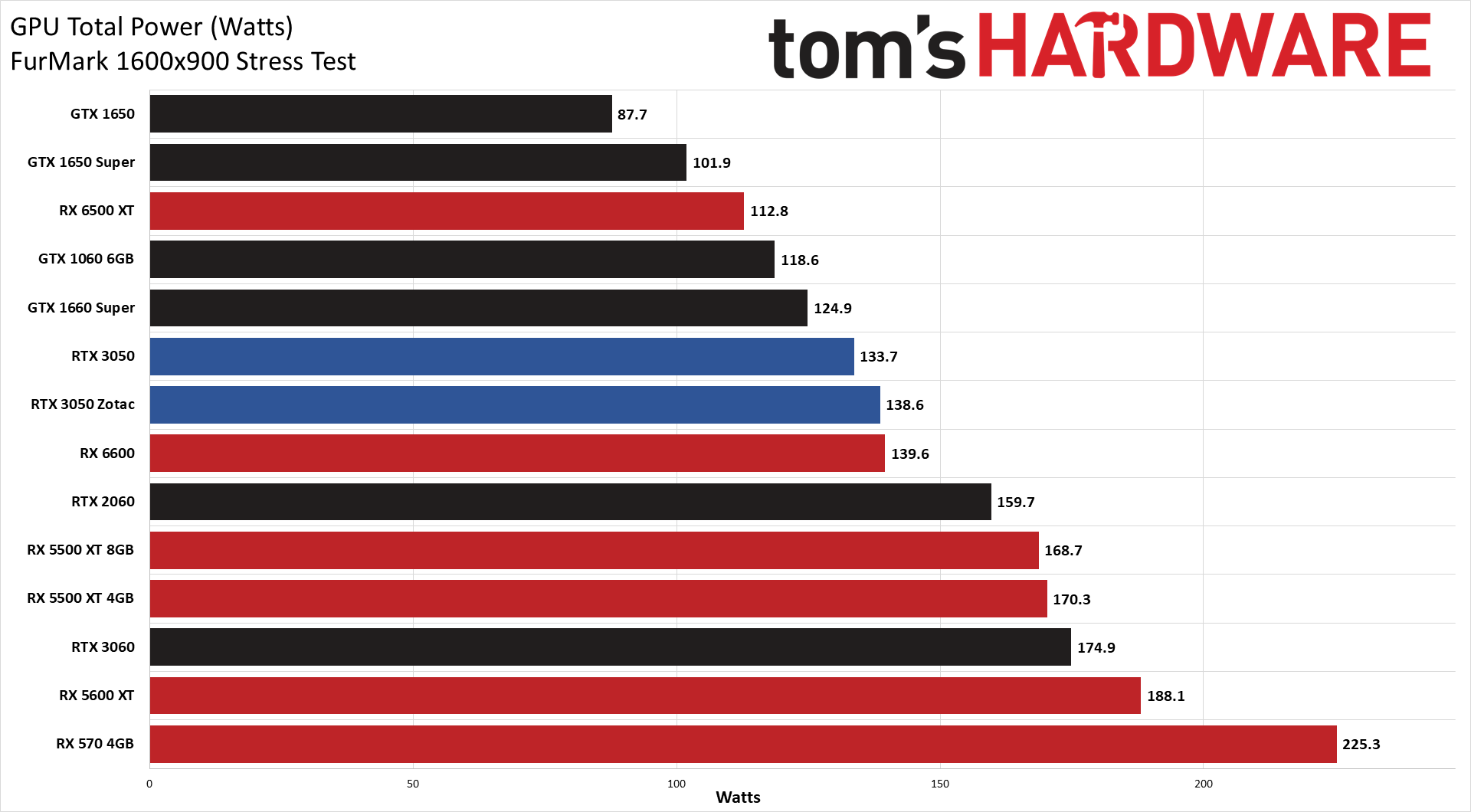
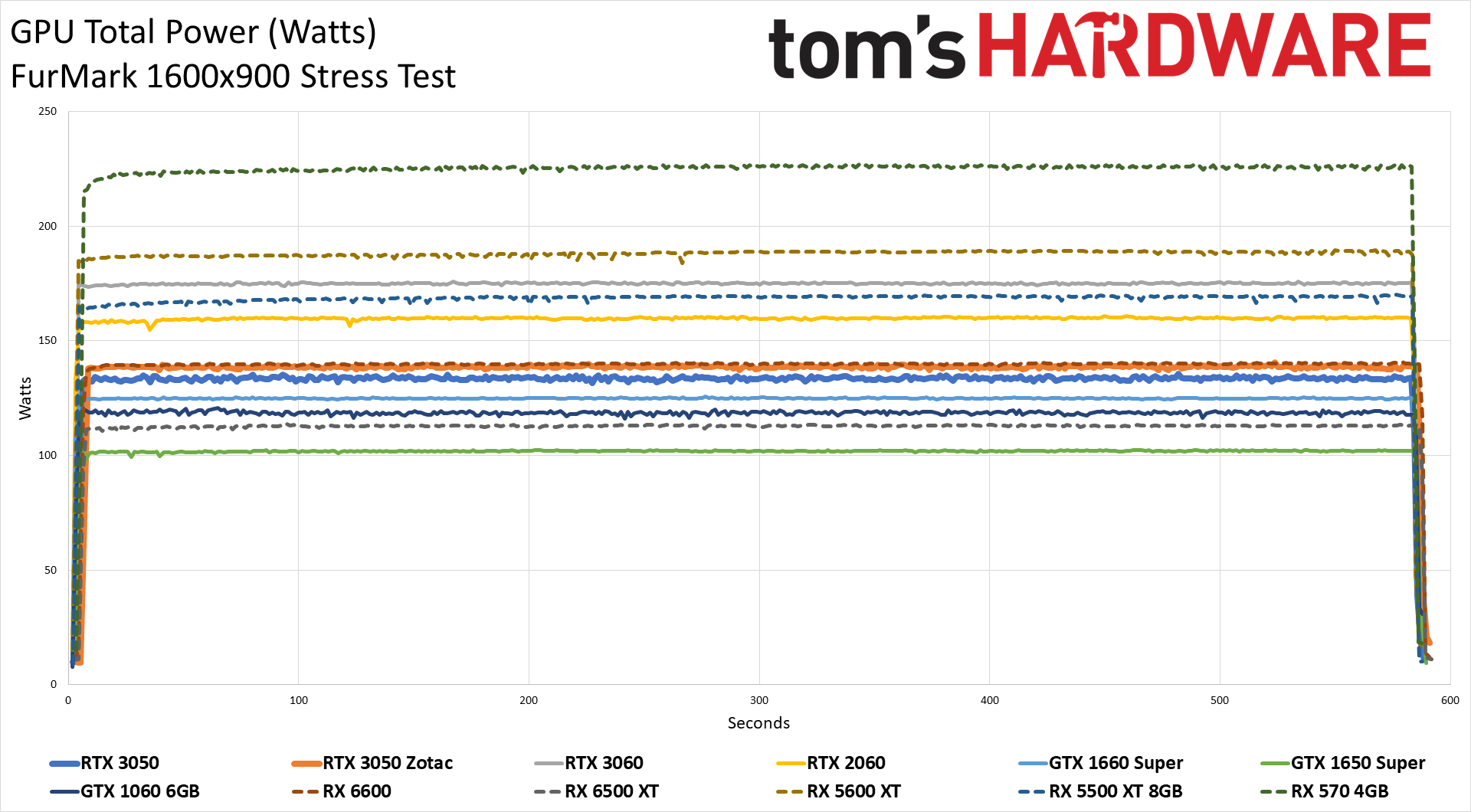
We get an interesting split in our power measurements this time. During the Metro Exodus benchmark, power use was slightly lower on the EVGA card, while power use in FurMark was slightly higher on the Zotac card. It's not a massive change, but apparently Zotac isn't throttling as hard in FurMark, leading to slightly higher power use.
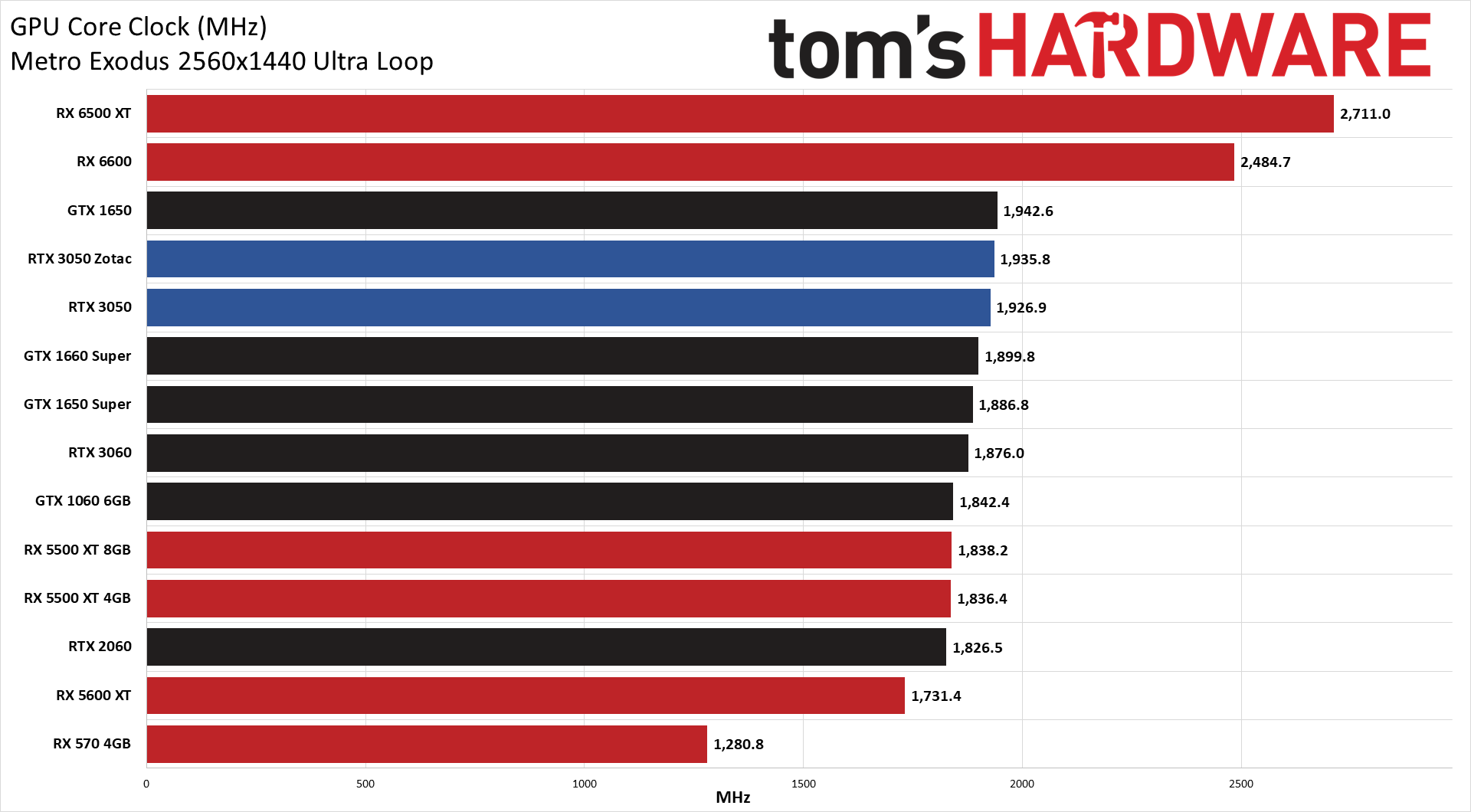
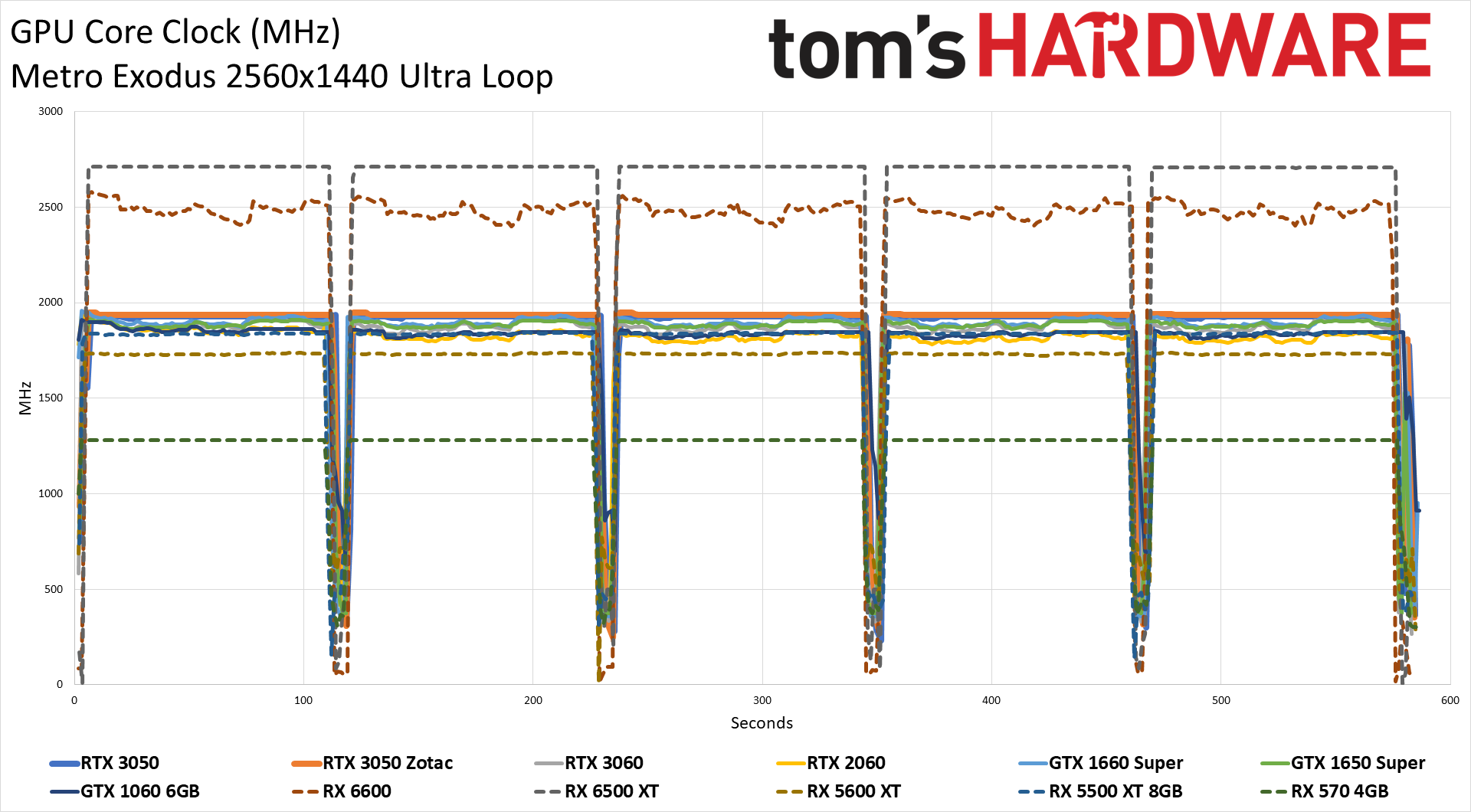


GPU clocks on the Zotac card were only 9MHz higher than the EVGA for Metro, but in FurMark the Zotac card clocked 52MHz higher. That's enough to explain the power difference we recorded.

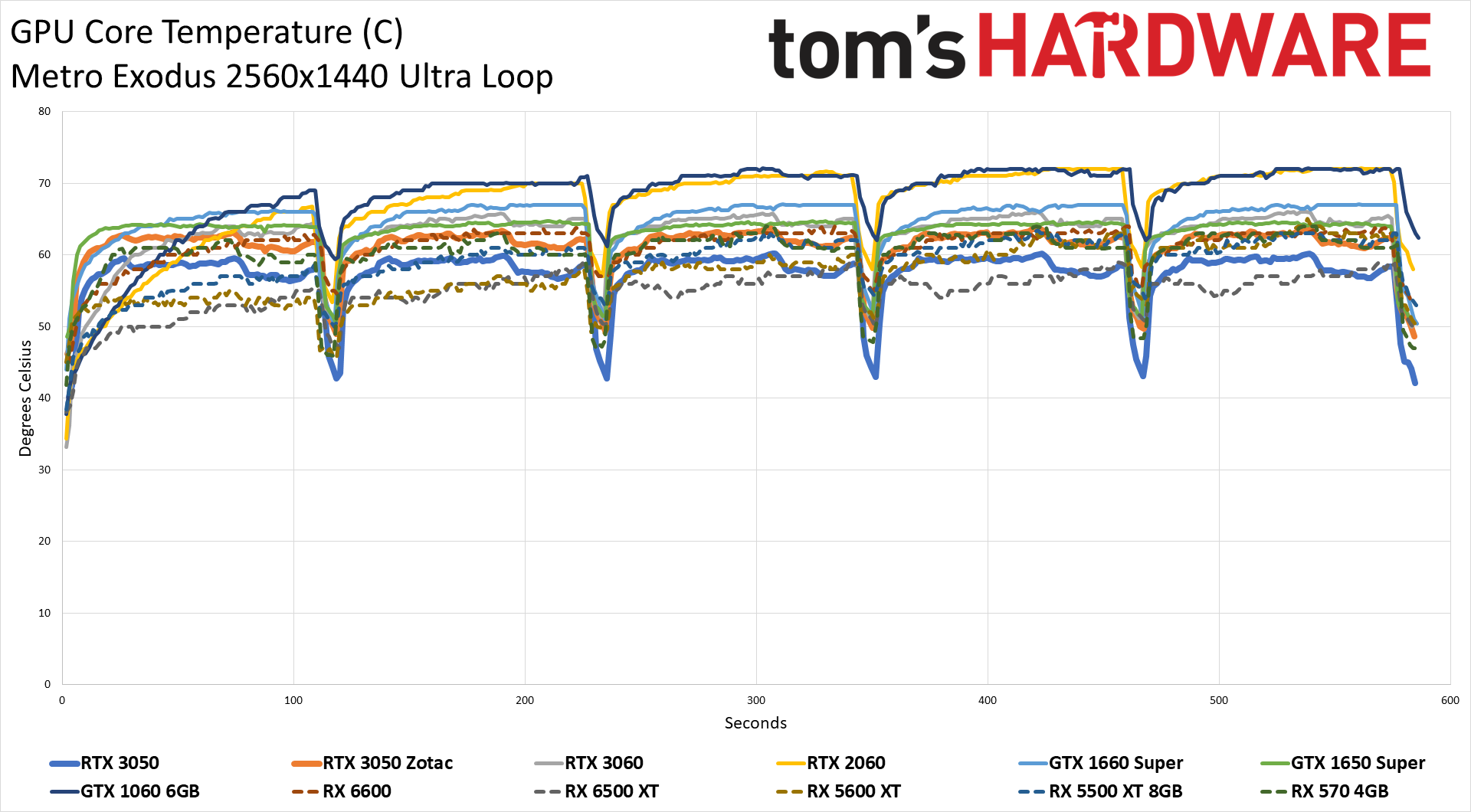
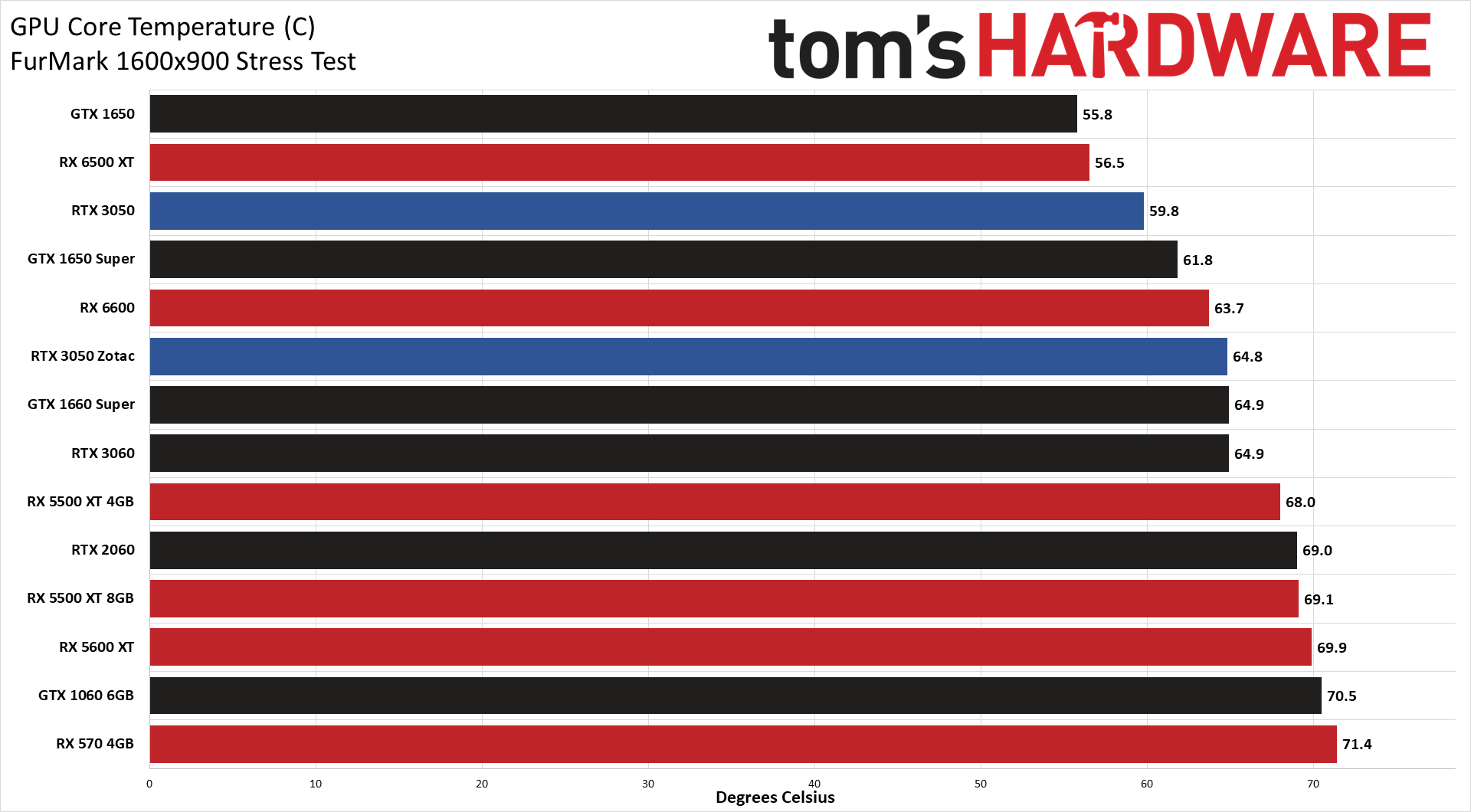
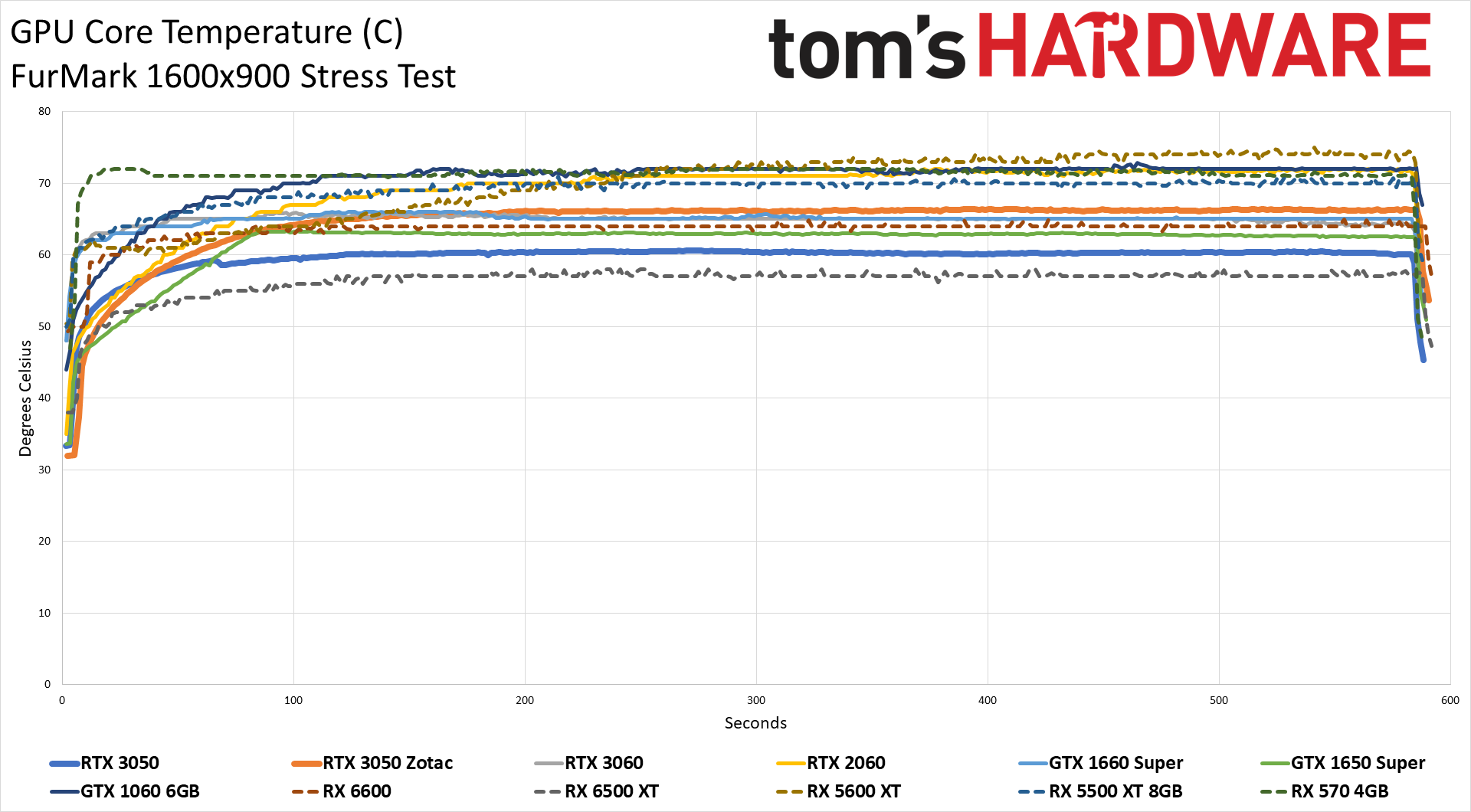
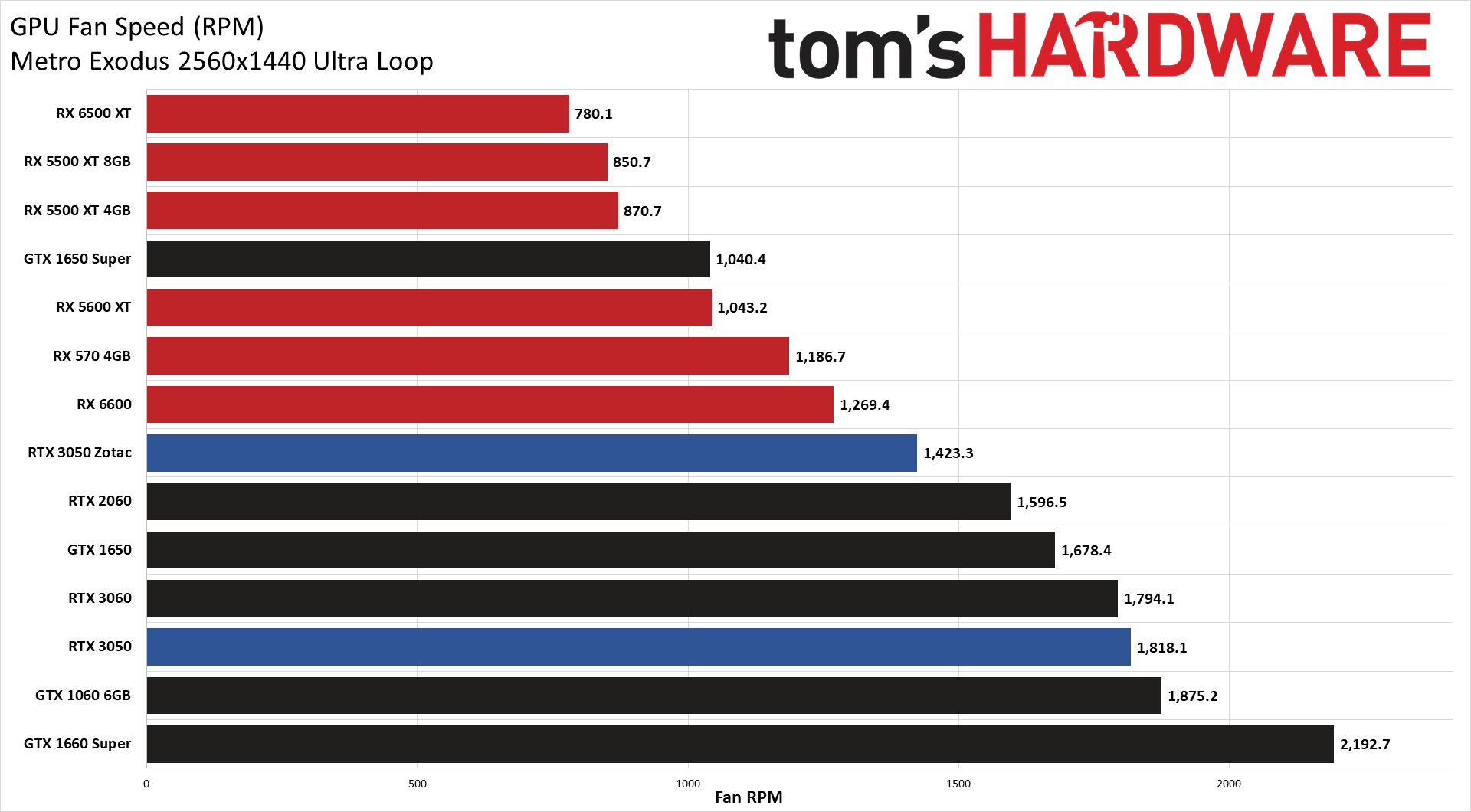



Finally, we see some interesting results with temperatures and fan speeds as well. The Zotac card ran about 3–4C hotter than the EVGA card in Metro and 5C hotter in FurMark, but its fan speed was 300–400 RPM lower in both cases. Basically, Zotac tuned for lower fan speeds and thus lower noise levels, at least in theory.
We also measured noise levels at 10cm using an SPL (sound pressure level) meter, aimed right at the GPU fans to minimize the impact of other fans like those on the CPU cooler. The noise floor of our test environment and equipment measures 33 dB(A). Where the EVGA RTX 3050 reached a peak noise level of 45.3 dB during testing, the Zotac card was a bit quieter at 41.4 dB. The Zotac fan was also spinning at 35% compared to 71% on the EVGA, so there's a lot more headroom if you need more cooling. We also tested with a static fan speed of 75%, at which point the card generated 54.6 dB of noise.
- MORE: Best Graphics Cards
- MORE: GPU Benchmarks and Hierarchy
- MORE: All Graphics Content
Get Tom's Hardware's best news and in-depth reviews, straight to your inbox.
Current page: Zotac GeForce RTX 3050 Power, Temps, Noise, Etc.
Prev Page Zotac GeForce RTX 3050 Gaming Performance Next Page Zotac GeForce RTX 3050 Twin Edge OC: Weak Overclock and Inflated Price
Jarred Walton is a senior editor at Tom's Hardware focusing on everything GPU. He has been working as a tech journalist since 2004, writing for AnandTech, Maximum PC, and PC Gamer. From the first S3 Virge '3D decelerators' to today's GPUs, Jarred keeps up with all the latest graphics trends and is the one to ask about game performance.
-
Exploding PSU Checked the local store here right when it finally arrived (this exact model), 810 AUD. I think I'll just wait it outReply -
Agera One The Twin Edge OC model from Zotac on the RTX 3060 had one extra heat pipe than the non-OC model, so the cost increase may be because of hardware changes too. Their 3050 web pages doesn't show any hardware changes though.Reply